Akaka Falls State Park
- December 29, 2023
- 1 comment
If you’re looking for a serene escape into the heart of Hawaii’s natural splendor, Akaka Falls State Park might just be the perfect destination. Nestled amidst the lush landscapes of Hawaii’s Big Island, this enchanting state park is a haven for nature lovers and adventure seekers alike. Located approximately 11 miles north of Hilo, the park boasts the magnificent ʻAkaka Falls, a 442-foot cascade that tumbles into a pristine gorge, creating a spectacle of awe-inspiring proportions.

With its well-maintained trails winding through tropical rainforests, revealing a rich tapestry of flora, including vibrant orchids, bamboo groves, and towering ferns, visitors are treated to panoramic views of Kahuna Falls and the iconic ʻAkaka Falls, each contributing to the park’s reputation as a haven for scenic wonders. Let’s explore this natural beauty and cultural significance in more detail.
Characterizing Features of the Akaka Falls State Park
- ʻAkaka Falls : The centerpiece of Akaka Falls State Park, ʻAkaka Falls, with its impressive 442-foot drop, stands as a testament to the raw power and grandeur of nature. Nestled within a lush gorge, the falls captivate visitors with their thunderous roar and the mesmerizing play of mist in the air. Named after Chief ‘Akaka-o-ka-nī’au-oi’o-i-ka-wao, this iconic waterfall not only offers a visual spectacle but also carries the weight of cultural significance, linking the landscape to the rich heritage of Hawaii.
- Kahuna Falls: Adding to the enchantment, Kahuna Falls graces the park with its more modest yet equally picturesque 100-foot cascade. As visitors traverse the loop trail, the sight of Kahuna Falls surrounded by verdant foliage provides a serene and intimate connection with nature. This smaller waterfall complements the grandeur of ʻAkaka Falls, offering a diverse range of visual experiences within the park’s captivating setting.
- Pōhaku a Pele and Folklore: Imbuing the park with a touch of mysticism, the presence of Pōhaku a Pele, a sacred stone, introduces visitors to local folklore. According to legend, striking this stone with a lehua ʻāpane branch is believed to influence the weather, darkening the sky and bringing rain. This mythic connection adds an intriguing cultural layer to the natural beauty of the park, inviting visitors to contemplate the intersection of tradition and landscape.
- Endemic Aquatic Life: Kolekole Stream, flowing through the park, becomes a vital habitat for unique Hawaiian aquatic life. The ʻoʻopu ʻalamoʻo fish, adapted to climb wet rocks behind the falls, and the ʻōpaekalaʻole shrimp, specially evolved to navigate the challenging terrain, showcase the resilience and adaptability of these endemic species. The stream becomes a living tapestry of biodiversity, contributing to the park’s identity as a sanctuary for distinctive Hawaiian wildlife.
- Tropical Rainforest Flora: The 0.4-mile loop trail meandering through a tropical rainforest introduces visitors to a rich botanical palette. Wild orchids, bamboo groves, and draping ferns create a vibrant and diverse ecosystem, transforming the hike into a sensory journey. Beyond the visual feast, the trail becomes an educational experience, offering insights into Hawaii’s native flora and the delicate balance of its ecosystems.
- Cascading Waterfalls and Trail Experience: The juxtaposition of ʻAkaka Falls and Kahuna Falls within the loop trail provides a dynamic and immersive experience. As visitors navigate the well-paved path, they encounter various vantage points that reveal the cascading beauty of the waterfalls. The trail, though requiring some physical effort, becomes an adventure through lush surroundings, offering a balanced mix of accessibility and a sense of exploration.
- Educational Interpretive Signs: Strengthening the park’s role as an educational destination, interpretive signs strategically placed along the trail offer valuable insights. From geological formations to the cultural history of the area, these signs provide context, transforming a nature walk into an informative exploration. Visitors gain a deeper appreciation for the park’s unique features, fostering a connection between the natural landscape and the stories it holds.
- Proximity to Hilo: Situated just 11 miles north of Hilo, Akaka Falls State Park becomes a conveniently accessible retreat. Its close proximity to the city makes it an ideal day-trip destination, allowing both locals and tourists to immerse themselves in the island’s beauty without an extended journey. This strategic location enhances the park’s appeal, offering a natural oasis within easy reach of urban comforts.
History
Established as a state park in 1950, Akaka Falls State Park on Hawaii’s Big Island is not only a natural wonder but also a site steeped in cultural and geological history. The park’s namesake, ʻAkaka Falls, derives its name from Chief ‘Akaka-o-ka-nī’au-oi’o-i-ka-wao, a figure with deep roots in Hawaiian ancestry. The falls themselves, plummeting 442 feet into a gorge, have witnessed centuries of change and adaptation in the surrounding environment. The area’s significance extends beyond its breathtaking waterfalls; the park is adorned with lush tropical rainforests housing a diverse array of flora and fauna.
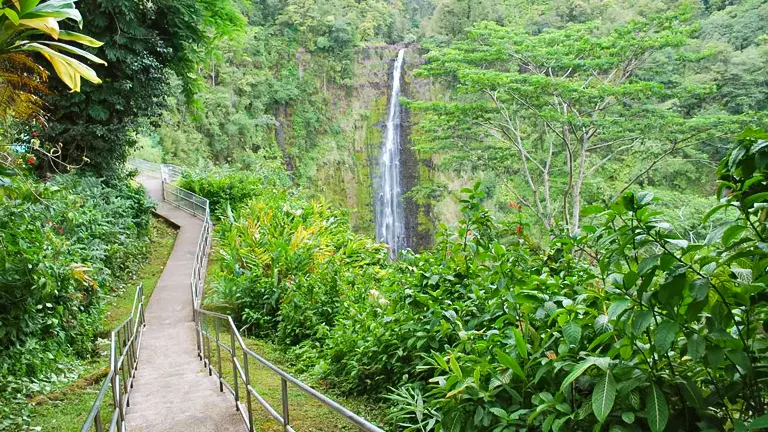
Over the years, Akaka Falls State Park has become a haven for visitors seeking both natural beauty and cultural enrichment. Its accessibility, coupled with interpretive signs along the trails, allows guests to delve into the geological formations and traditional stories that make this site a captivating destination. The park’s establishment reflects Hawaii’s commitment to preserving its natural and cultural treasures, inviting generations to connect with the island’s rich heritage.
Importance in Conservation and Recreation of Akaka Falls State Park
Akaka Falls State Park plays a pivotal role in the conservation and recreation landscape of Hawaii’s Big Island, serving as a sanctuary for both natural wonders and cultural heritage. From a conservation standpoint, the park’s diverse ecosystems, including the tropical rainforest and Kolekole Stream, provide a habitat for unique Hawaiian flora and fauna. The ʻoʻopu ʻalamoʻo fish and ʻōpaekalaʻole shrimp, endemic to the region, underscore the park’s significance in preserving native species. Furthermore, the lush vegetation, marked by wild orchids and bamboo groves, contributes to the island’s biodiversity.

Beyond its conservation efforts, Akaka Falls State Park stands as a recreational haven, offering visitors a chance to connect with nature through a well-maintained trail system. The loop trail not only provides stunning views of ʻAkaka Falls and Kahuna Falls but also fosters an understanding of Hawaiian culture with interpretive signs along the way. As a destination that seamlessly integrates conservation and recreation, Akaka Falls State Park exemplifies Hawaii’s commitment to environmental stewardship and the promotion of sustainable tourism.
Unique Location of Akaka Falls State Park
Located within the tropical paradise of Hawaii’s Big Island, Akaka Falls State Park boasts a unique and captivating location that sets it apart as a natural gem. Situated approximately 11 miles north of Hilo, the park’s strategic position offers visitors a seamless blend of accessibility and pristine wilderness. The journey to the park takes travelers along the scenic Hawaii Belt Road, leading to the end of Hawaii Route 220.
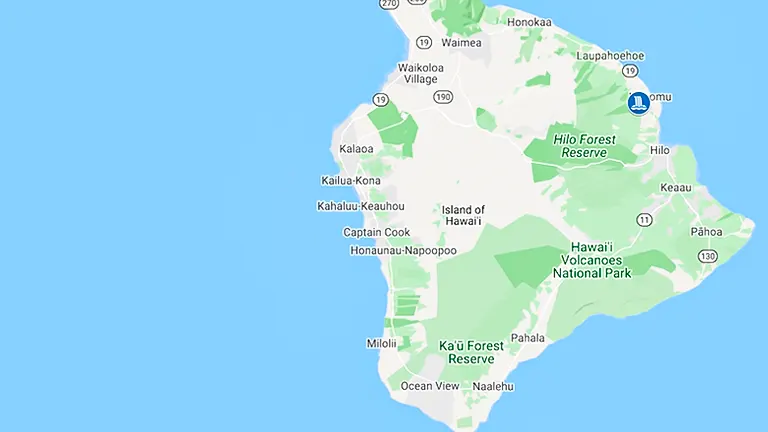
This geographical setting not only places the park within easy reach of Hilo but also immerses it in the island’s lush northeastern landscape. Surrounded by the beauty of the Hamakua Coast, the park provides a stunning backdrop of dense rainforests, creating a harmonious fusion of cultural significance and natural splendor. The unique location of Akaka Falls State Park thus transforms each visit into a journey through the heart of Hawaii’s rich ecological and historical tapestry.
Diverse Vegetation and Unique Plant Species
- Orchids (Orchidaceae): Akaka Falls State Park is adorned with a diverse array of orchids, adding vibrant splashes of color to the lush rainforest landscape. Orchids, belonging to the family Orchidaceae, thrive in the park’s tropical climate. These exquisite blooms contribute to the park’s botanical richness, offering visitors an opportunity to witness the delicate beauty of species such as Dendrobium, Phalaenopsis, and Epidendrum.
- Bamboo Groves (Bambusoideae): The park features extensive bamboo groves, providing a dramatic vertical element to the landscape. The Bambusoideae family, encompassing various bamboo species, creates a striking visual contrast against the backdrop of waterfalls and dense foliage. The rhythmic rustle of bamboo leaves in the breeze adds an auditory dimension to the sensory experience, making the park’s vegetation both visually and aurally captivating.
- Ferns (Pteridophyta): The rainforest floor and rocky crevices throughout Akaka Falls State Park host an abundance of fern species, adding a prehistoric charm to the surroundings. Scientifically classified under Pteridophyta, these ancient plants include diverse genera such as Nephrolepis and Adiantum. The intricate fronds of ferns create a verdant carpet, enhancing the park’s enchanting and primeval ambiance.
- Lehua ʻĀpane (Metrosideros polymorpha): Also known as ʻōhiʻa ʻāpane, this native tree species belongs to the Myrtaceae family. It plays a significant role in local folklore, especially in connection with the legendary stone Pōhaku a Pele found in the park. The ʻōhiʻa ʻāpane’s dark red blossoms are traditionally associated with rain-summoning rituals, adding cultural depth to the park’s vegetation.
- Ti Plants (Cordyline fruticosa): Indigenous to Hawaii, the ti plant, scientifically known as Cordyline fruticosa, is a common sight in Akaka Falls State Park. Its vibrant green leaves and distinctive red-edged varieties contribute to the tropical tapestry of the rainforest. Historically, ti leaves have cultural significance, often used in Hawaiian rituals and ceremonies.
- Hapuʻu Fern (Cibotium): The iconic hapuʻu fern, a member of the Cibotium genus, graces the park’s landscape with its large and graceful fronds. Often found in Hawaiian rainforests, these ferns can reach impressive heights. The unfolding fronds, known as “fiddles,” create a captivating visual display as they gradually unfurl, adding a unique botanical feature to the park’s diverse flora.
- Ohia Trees (Metrosideros polymorpha): Beyond its blossoms, the ʻōhiʻa tree, scientifically classified as Metrosideros polymorpha, stands tall in Akaka Falls State Park. With its distinctive twisted trunk and evergreen canopy, the ʻōhiʻa is a dominant species in the Hawaiian forest ecosystem, symbolizing resilience and adaptability in the face of changing environmental conditions.
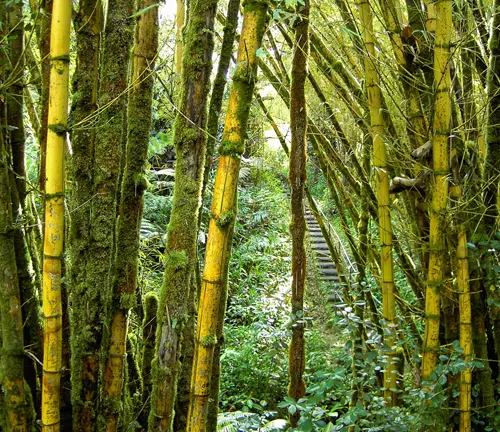
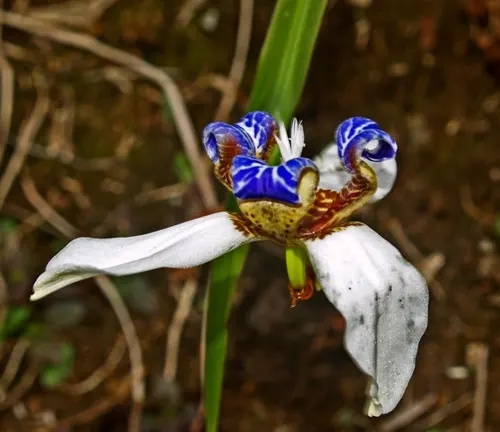
Akaka Falls State Park’s diverse vegetation, showcasing a rich array of plant species, not only contributes to the park’s scenic beauty but also underscores its ecological significance within the broader context of Hawaii’s unique flora and fauna.
Different Species of Mushrooms Found in Akaka Falls State Park
- Fly Agaric (Amanita Muscaria): Found in the park’s forested areas, Amanita muscaria is a distinctive mushroom species known for its bright red cap adorned with white spots. Scientifically classified as Amanita muscaria, this mushroom is often associated with mycorrhizal relationships in the soil, contributing to the overall ecological balance in the park.
- Shiitake Mushroom (Lentinus edodes): Among the edible fungi in Akaka Falls State Park, Lentinus edodes, commonly known as Shiitake mushrooms, can be found on decaying logs. Recognized for their culinary value, these mushrooms play a role in nutrient recycling, breaking down organic matter in the forest ecosystem. Shiitake mushrooms have also been utilized for their medicinal properties.
- Magic Mushrooms (Psilocybe): The park is home to various species of Psilocybe mushrooms, known for their psychoactive properties. Scientifically categorized under Psilocybe spp., these mushrooms have cultural and spiritual significance for some, while ecologically contributing to nutrient cycling in the forest floor. It’s important to note that the consumption of wild mushrooms should be avoided due to the potential presence of toxic species.
- Violet Coral (Clavaria zollingeri): Adding a touch of color to the forest floor, Clavaria zollingeri, also known as Violet Coral, is a mushroom species with a striking violet hue. This coral-shaped fungus, belonging to the family Clavariaceae, thrives in the park’s damp and shaded environments, offering a unique visual element to the mycological diversity of the area.
- Fairy Ring Mushroom (Marasmius oreades): Often seen in grassy areas of Akaka Falls State Park, Marasmius oreades, or the Fairy Ring Mushroom, forms circular patterns known as fairy rings. These mushrooms, characterized by their small size and delicate appearance, contribute to the decomposition of organic matter, playing a role in nutrient cycling within the ecosystem.
- Waxcaps (Hygrocybe): Waxcap mushrooms of the Hygrocybe genus add a splash of vibrant colors to the park’s landscapes. These small, waxy-capped fungi come in various shades, contributing to the park’s overall mycological diversity. Waxcaps are often associated with healthy, undisturbed ecosystems, indicating the park’s ecological vitality.
Observing the different species of mushrooms in Akaka Falls State Park provides not only a fascinating glimpse into the kingdom of fungi but also highlights the crucial ecological roles these organisms play in nutrient cycling and maintaining the health of the park’s diverse ecosystems. Visitors need to appreciate these fungal wonders while exercising caution and refraining from the consumption of wild mushrooms unless identified by experts, as some species can be toxic.
Fauna
- ʻOʻopu ʻalamoʻo (Lentipes concolor): The endemic Hawaiian goby fish, ʻOʻopu ʻalamoʻo, is a fascinating species that spawns in the streams above the waterfalls in Akaka Falls State Park. Scientifically known as Lentipes concolor, these fish possess a suction disk on their bellies, allowing them to cling to wet rocks. Their unique life cycle involves maturing in the sea and returning to the stream for spawning, showcasing the park’s role as a crucial habitat for native aquatic life.
- ʻŌpaekalaʻole (Atyoida bisulcata): The ʻŌpaekalaʻole shrimp, scientifically classified as Atyoida bisulcata, has evolved to navigate the challenges posed by ʻAkaka Falls. These shrimp are adapted to climb the falls and thrive in Kolekole Stream, adding an aquatic dimension to the park’s biodiversity. Their presence underscores the interconnected relationships between the geological features of the falls and the diverse wildlife that calls the park home.
- Hawaiian Happy-Face Spider (Theridion grallator): In the lush vegetation of Akaka Falls State Park, the Hawaiian Happy-Face Spider, scientifically known as Theridion grallator, weaves its intricate webs. Known for its distinctive markings resembling a smiling face on its abdomen, this endemic arachnid adds an element of wonder to the park’s insect life. The presence of these spiders emphasizes the importance of the park as a haven for unique and often endangered species.
- ʻApapane (Himatione sanguinea): The ʻApapane, a native Hawaiian honeycreeper (Himatione sanguinea), adds a splash of color to the park with its vibrant red plumage. These small birds are often seen flitting through the forest canopy, foraging for nectar and insects. Their presence highlights the park’s significance as part of the diverse ecosystems that support native avian species.
- Japanese White-Eye (Zosterops japonicus): The Japanese White-Eye, scientifically known as Zosterops japonicus, is a small bird that has established itself in Hawaii. Common in the park, these birds play a role in pollination as they feed on nectar. While not native to the islands, their adaptation to the local environment showcases the complex interplay of introduced and endemic species within the park’s ecosystem.
- Koa Bug (Coleotichus blackburniae): The Koa Bug, with its striking black and orange markings, is a native Hawaiian insect (Coleotichus blackburniae) often found in the park’s wooded areas. These bugs are associated with the native koa tree (Acacia koa) and play a role in the tree’s life cycle. Observing these insects provides insights into the intricate relationships between the park’s flora and fauna.
- Ermine Moth Caterpillar (Hyposmocoma species): The park is home to various species of Ermine Moth Caterpillars, belonging to the genus Hyposmocoma. These caterpillars play a role in the park’s ecosystem by contributing to the decomposition of plant matter. Their varied appearances and behaviors showcase the diversity of insect life within Akaka Falls State Park.
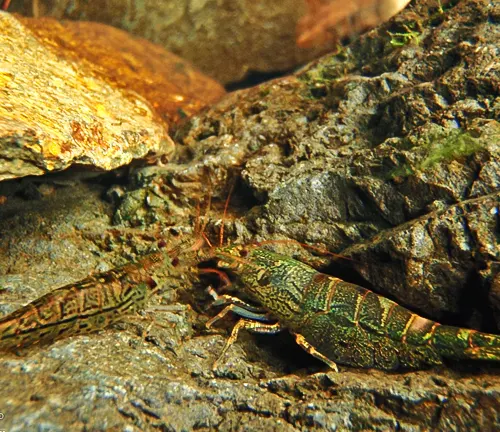
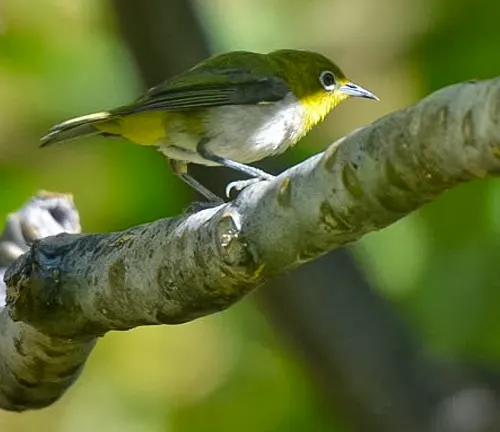
The fauna of Akaka Falls State Park, from endemic fish and shrimp to unique arachnids and birds, contributes to the ecological tapestry of the region. The park’s role as a habitat for diverse species underscores its importance in both conservation and providing a rich experience for visitors interested in Hawaii’s unique wildlife.
Importance as a Wildlife Corridor and Habitat for Threatened Species
Akaka Falls State Park stands not only as a breathtaking natural attraction but also serves a crucial role as a wildlife corridor and habitat for threatened species on Hawaii’s Big Island. Its lush rainforest, traversed by Kolekole Stream, provides a vital connection for various indigenous species, serving as a corridor for wildlife movement between different ecosystems. The park’s significance is amplified by its role in supporting the life cycle of endemic species, such as the ʻOʻopu ʻalamoʻo fish and the ʻŌpaekalaʻole shrimp, which rely on the stream and falls for spawning and survival. Additionally, the park serves as a refuge for threatened avian species like the Hawaiian Happy-Face Spider, ʻApapane, and Koa Bug.

Its diverse flora and topography contribute to a mosaic of habitats, fostering resilience and adaptation for various species. As a result, Akaka Falls State Park plays a crucial part in the conservation efforts of Hawaii, offering a sanctuary for wildlife and highlighting the intricate interdependence between the park’s geological features and its rich biodiversity. Preserving this natural haven is not just a matter of scenic beauty but a commitment to maintaining the delicate balance of Hawaii’s ecosystems and protecting the future of its threatened and endemic species.
Activities in Akaka Falls State Park for Visitors
1. Scenic Hiking Trails
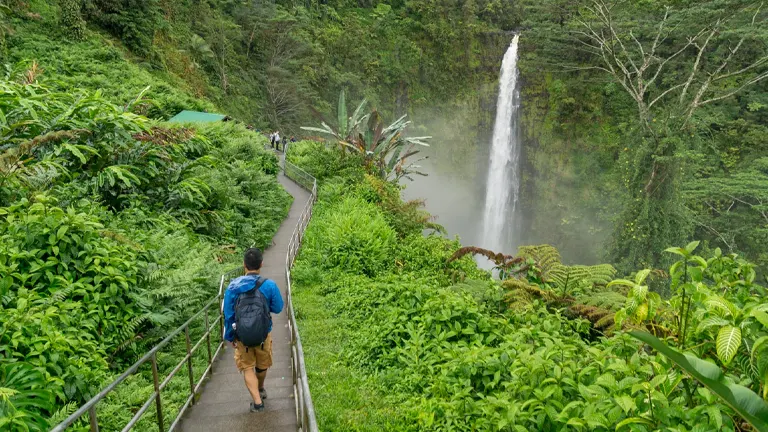
Akaka Falls State Park offers visitors a network of scenic hiking trails that wind through the lush rainforest, providing opportunities to witness the captivating beauty of the park’s waterfalls and diverse flora. The most popular trail is the 0.4-mile loop, allowing for an immersive experience without requiring an extensive time commitment. As visitors traverse the well-maintained paths, they encounter panoramic viewpoints, offering breathtaking vistas of both ʻAkaka Falls and Kahuna Falls.
2. Nature Photography
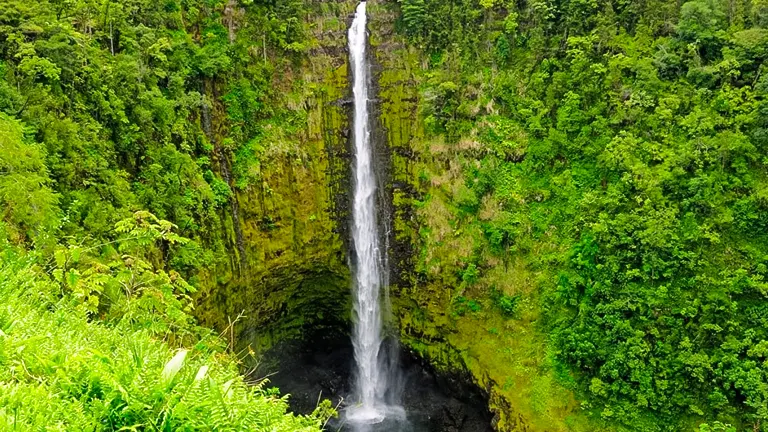
The park provides an ideal setting for nature enthusiasts and photographers to capture the stunning landscapes, vibrant flora, and unique wildlife. Whether focusing on the cascading waterfalls, the intricate patterns of endemic plants, or the colorful bird species, Akaka Falls State Park offers a plethora of subjects to document and cherish. The diverse ecosystems and natural lighting conditions make it a haven for capturing the essence of Hawaii’s pristine beauty.
3. Wildlife Observation
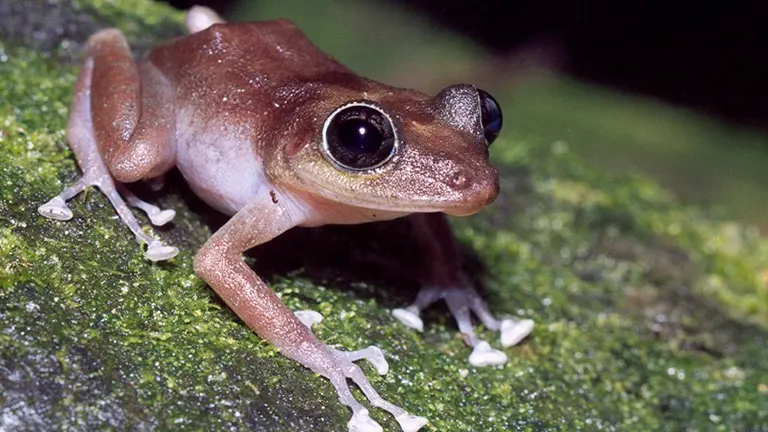
Akaka Falls State Park is a haven for wildlife, making it an excellent destination for those interested in observing native and endemic species. From the ʻApapane honeycreepers flitting through the forest canopy to the unique aquatic life in Kolekole Stream, the park provides opportunities for wildlife enthusiasts to connect with the region’s natural inhabitants. Visitors are encouraged to maintain a respectful distance and observe the wildlife in their natural habitats.
4. Educational Interpretive Signs

Strengthening the park’s role as an educational destination, interpretive signs strategically placed along the trails offer valuable insights into the geological formations, native flora, and cultural history of the area. These signs enhance the visitor experience, providing context to the natural wonders encountered during the journey and fostering a deeper understanding of Hawaii’s ecological and cultural significance.
5. Picnicking and Relaxation
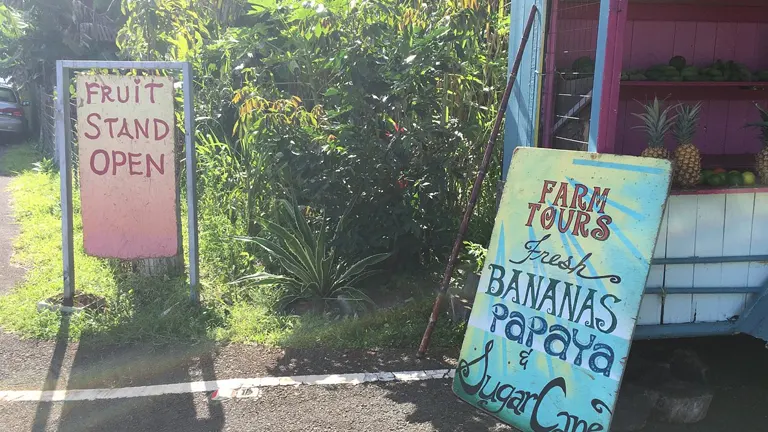
For those seeking a more leisurely experience, Akaka Falls State Park provides designated picnic areas where visitors can unwind amidst the natural beauty. Shaded spots offer a perfect setting for families and friends to enjoy a picnic while surrounded by the sights and sounds of the rainforest. It becomes a serene retreat for relaxation, allowing visitors to immerse themselves in the tranquility of the surroundings.
6. Cultural Exploration

Beyond its natural wonders, the park also holds cultural significance, evident in the legends associated with ʻAkaka Falls and Pōhaku a Pele. Visitors can engage in cultural exploration by learning about the myths and traditions tied to the land, gaining insights into the historical and spiritual aspects that enrich the park’s narrative. Cultural understanding adds depth to the overall visitor experience.
7. Accessibility for All Ages

Akaka Falls State Park is designed to be accessible for visitors of all ages and fitness levels. The well-paved trails, though featuring some steps, cater to a wide range of abilities, making it a family-friendly destination. The park’s accessibility ensures that everyone can partake in the adventure and witness the natural wonders without encountering significant physical barriers.
Akaka Falls State Park offers a diverse range of activities, catering to various interests and preferences. Whether visitors seek an exhilarating hike, a peaceful retreat, or an educational exploration, the park provides a multifaceted experience that invites individuals to connect with Hawaii’s natural and cultural heritage.
Conservation and Management
- Native Plant Restoration: Akaka Falls State Park prioritizes native plant restoration initiatives as a fundamental component of its conservation efforts. Invasive plant species pose a threat to the park’s delicate ecosystem, and ongoing projects focus on removing invasive species to restore the habitat to its natural state. By reintroducing native plants, the park aims to enhance biodiversity, support native wildlife, and maintain the ecological balance that defines Hawaii’s unique landscapes.
- Wildlife Habitat Preservation: Recognizing the significance of the park as a habitat for endemic and threatened species, conservation efforts extend to the preservation of wildlife habitats. Kolekole Stream, with its resident ʻOʻopu ʻalamoʻo fish and ʻŌpaekalaʻole shrimp, is carefully managed to ensure optimal conditions for these species. The park’s commitment to habitat preservation is integral to safeguarding the rich biodiversity that relies on the stream and surrounding rainforest.
- Visitor Education and Awareness: Akaka Falls State Park places a strong emphasis on educating visitors about the importance of conservation and environmental stewardship. Interpretive signs along the trails provide information about the park’s geological features, native flora and fauna, and cultural significance. By fostering awareness among visitors, the park aims to instill a sense of responsibility and respect for the fragile ecosystems they encounter, encouraging sustainable practices and minimizing human impact.
- Trail Maintenance and Accessibility: To strike a balance between welcoming visitors and preserving the natural environment, Akaka Falls State Park invests in trail maintenance and accessibility initiatives. Well-maintained trails ensure a positive visitor experience while minimizing environmental impact. Accessibility measures, including paved paths and signage, cater to a diverse range of visitors, promoting inclusivity and allowing everyone to enjoy the park responsibly.
- Invasive Species Management: Invasive species pose a significant threat to the delicate ecosystems of Hawaii, and Akaka Falls State Park is committed to proactive invasive species management. This involves regular monitoring and removal of non-native plants and animals that could disrupt the park’s natural balance. By addressing invasive species, the park protects native vegetation, reduces competition for resources, and preserves the habitat integrity crucial for the survival of endemic species.
- Cultural Heritage Preservation: In addition to ecological conservation, Akaka Falls State Park recognizes the importance of preserving its cultural heritage. Efforts are made to maintain and share the stories, traditions, and legends associated with the park, including those tied to ʻAkaka Falls and Pōhaku a Pele. This cultural preservation adds depth to the visitor experience and reinforces the interconnectedness of nature and tradition.
- Collaboration with Local Communities: Conservation in Akaka Falls State Park is not an isolated endeavor but a collaborative effort that involves engagement with local communities. Partnerships with community organizations, environmental groups, and local authorities contribute to a holistic approach to conservation. By involving the community, the park fosters a sense of shared responsibility for the protection of natural and cultural resources.
The conservation and management strategies implemented in Akaka Falls State Park underscore a comprehensive and forward-thinking approach. By addressing invasive species, preserving habitats, promoting visitor education, and collaborating with local communities, the park strives to create a sustainable and resilient ecosystem that can be enjoyed by current and future generations.
Recommendation
I strongly encourage you to explore Akaka Falls State Park for a captivating fusion of natural wonders and cultural richness. This park, celebrated for its diverse ecosystems, iconic waterfalls, and recreational possibilities, provides a distinctive and immersive experience. Engage in contemplative outdoor pursuits like hiking and observing wildlife, actively participating in the park’s ongoing conservation initiatives. The picturesque trails, historical landmarks, and collaborative conservation programs solidify Akaka Falls State Park as an essential destination for those in search of a harmonious blend of nature and recreational discovery.
Conclusion
Our journey through Akaka Falls State Park has been a true delight, with its unparalleled natural beauty and breathtaking vistas. From the towering ʻAkaka Falls to the lush tropical rainforests, this state park offers a serene escape into the heart of Hawaii’s natural splendor. As visitors traverse the park’s well-maintained trails, they are treated to panoramic views of Kahuna Falls and the iconic ʻAkaka Falls, each contributing to the park’s reputation as a haven for scenic wonders. It’s no wonder that this enchanting destination is a popular spot for nature lovers and adventure seekers alike.
FAQs
- What is the significance of the name ‘Akaka’ in Akaka Falls State Park?
The name ‘Akaka’ is derived from Chief ‘Akaka-o-ka-nī’au-oi’o-i-ka-wao, the grandson of Kūlanikapele and Kīakalohia, according to local folklore. It adds a cultural dimension, connecting the park to Hawaiian history and legends. - Are there any cultural landmarks within Akaka Falls State Park?
Yes, one notable landmark is Pōhaku a Pele, a stone in the park associated with local folklore. Legend has it that striking this stone with a branch of lehua ʻāpane causes the sky to darken and rain to fall. - How long does it take to complete the main hiking trail in the park?
The main loop trail is approximately 0.4 miles and takes less than an hour to complete. It offers stunning views of both ʻAkaka Falls and Kahuna Falls, making it an accessible and rewarding hike for visitors of various fitness levels. - What wildlife can be observed in Akaka Falls State Park?
The park is home to diverse wildlife, including the endemic ʻOʻopu ʻalamoʻo fish and ʻŌpaekalaʻole shrimp. Birdwatchers can spot species such as the ʻApapane honeycreeper and Japanese White-Eye. - Is Akaka Falls accessible for visitors with mobility challenges?
While the trail includes multiple steps and is not wheelchair accessible, efforts have been made to create a paved route, providing a relatively easy-to-follow loop. Visitors with mobility challenges can still enjoy scenic viewpoints with proper assistance. - Are there guided tours available in Akaka Falls State Park?
As of now, the park primarily offers self-guided experiences. Interpretive signs along the trails provide valuable information about the park’s geological features, native flora, and cultural significance. - Can visitors swim in the pools below the waterfalls?
No, swimming is not allowed in the pools below the waterfalls. Conservation efforts and safety regulations prohibit swimming to preserve the natural environment and ensure the well-being of visitors. - How can visitors contribute to conservation efforts in the park?
Visitors can actively contribute to conservation by staying on designated trails, respecting wildlife and plants, and following Leave No Trace principles. Additionally, supporting local conservation programs and initiatives helps ensure the long-term sustainability of Akaka Falls State Park.
As we bid farewell to Akaka Falls State Park, we are left with a sense of wonder and awe at the beauty of Hawaii’s Big Island. Whether you’re a seasoned traveler or a first-timer to the island, Akaka Falls State Park is a must-visit destination that will leave you with unforgettable memories. With its accessibility, cultural significance, and breathtaking vistas, this enchanting state park beckons those seeking a serene escape into the heart of Hawaii’s natural splendor. So, pack your bags and get ready to experience the magic of Akaka Falls State Park for yourself.


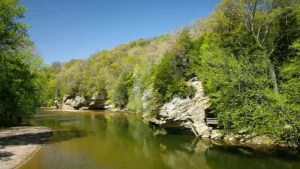
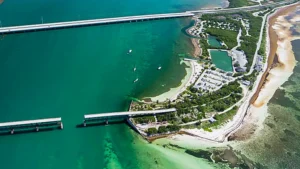
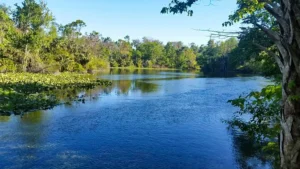
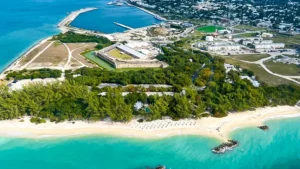
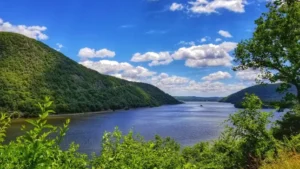

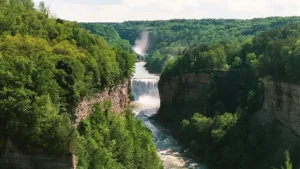
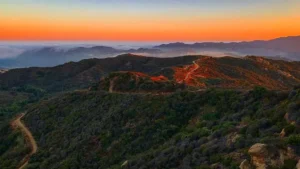
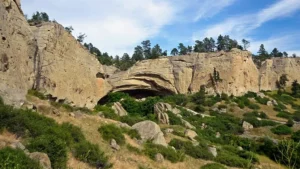

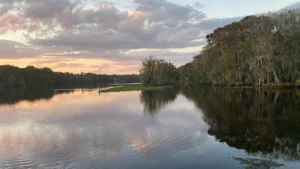

Is the trail for the falls accessible for someone with a walker?
Matthew Anderson
April 9, 2024 1:05 am